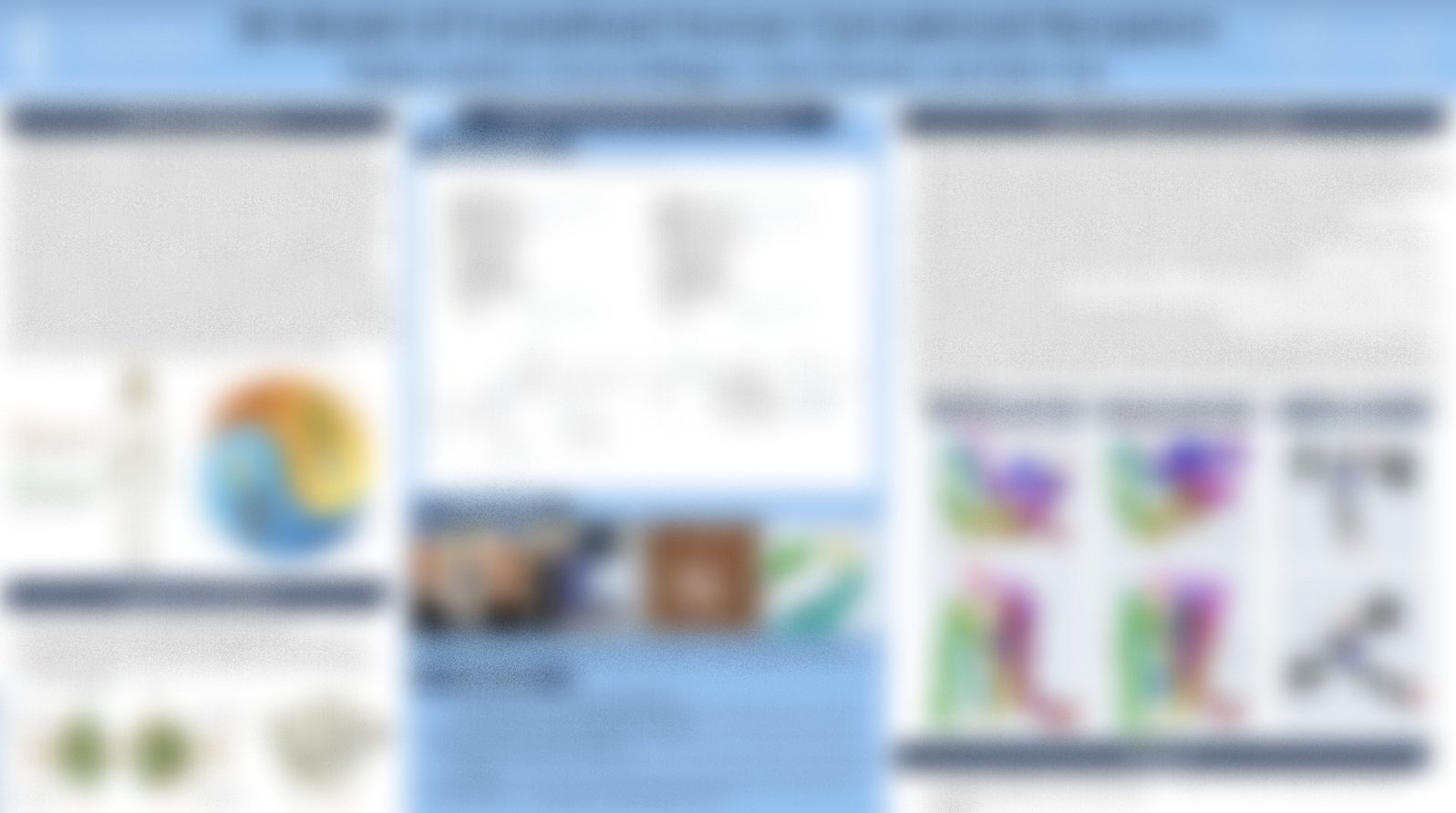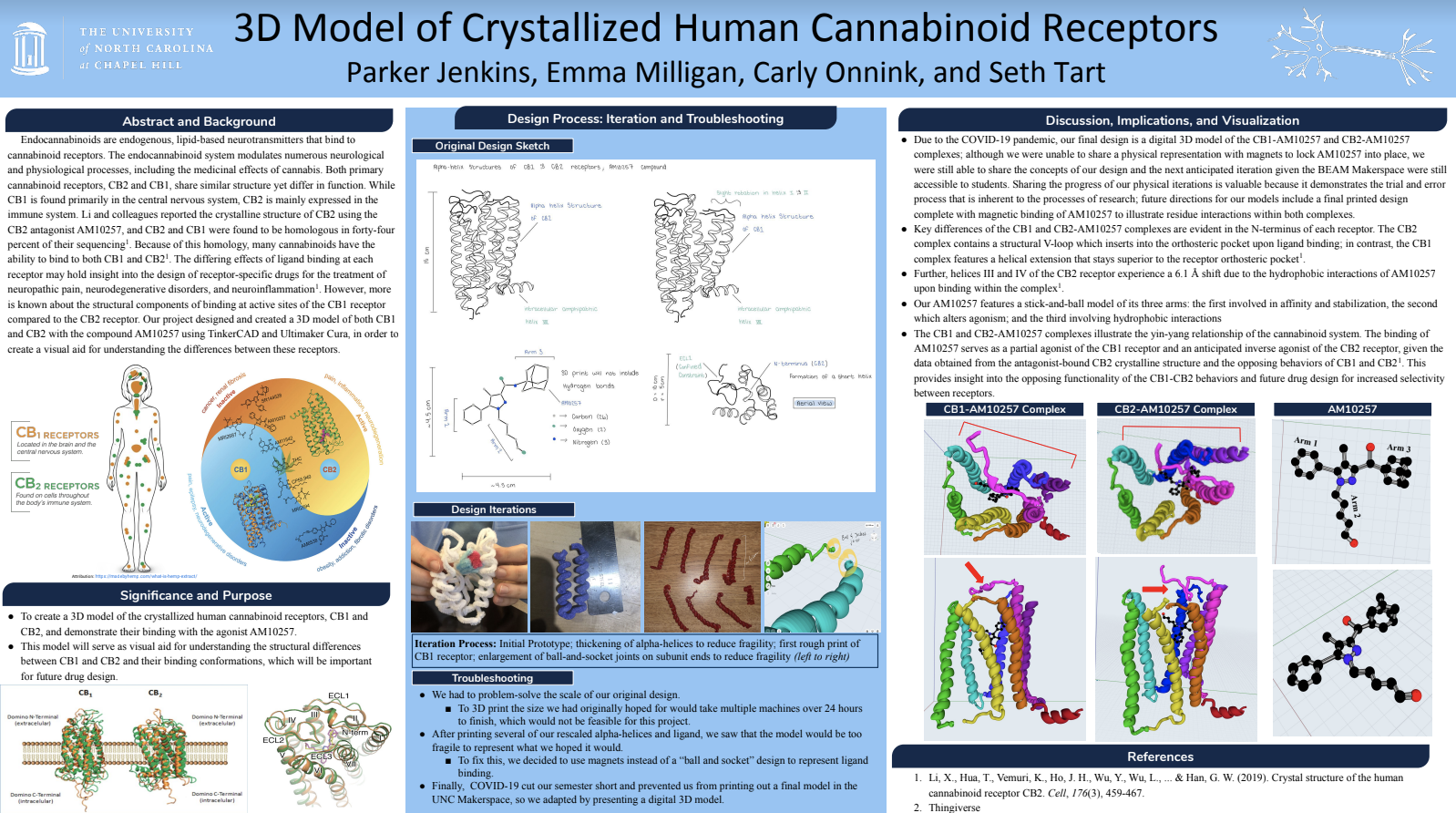
3D Model of Crystalized Human Cannabinoid Receptors
UNC-CH NSCI 405: Advanced Molecular Pharmacology
Course research presentation for NSCI 405: Advanced Molecular Pharmacology (Course-based Undergraduate Research Experience, ‘CURE’ Class) @ UNC; presented for UNC's Celebration of Undergraduate Research Symposium by Parker Jenkins, Emma Milligan, Carly Onnick, Seth Tart
Research concept: Conceptualization and engineering of physical receptor-ligand models focused on illustrating and visualizing the CB1-AM10257 and CB2-AM10257 complexes before and after structural changes due to ligand (AM10257) binding
This was one of my favorite research theses that I did at UNC-CH. For this project, my group and I were tasked with researching a specific ligand-receptor interaction, and building a physical model to reflect the structural changes of each protein domain as a result of ligand binding; my group chose to investigate the differences in conformational changes of the two cannabinoid receptors in the central nervous system—CB1 and CB2—upon binding of AM10257—a partial agonist in the CB1-AM10257 complex and an antagonist in the CB2-AM10257 complex.
Due to the emergence of the COVID-19 pandemic and the emergency switch to remote learning, our structural model was designed using 3D printing software, modeled, and presented virtually.


